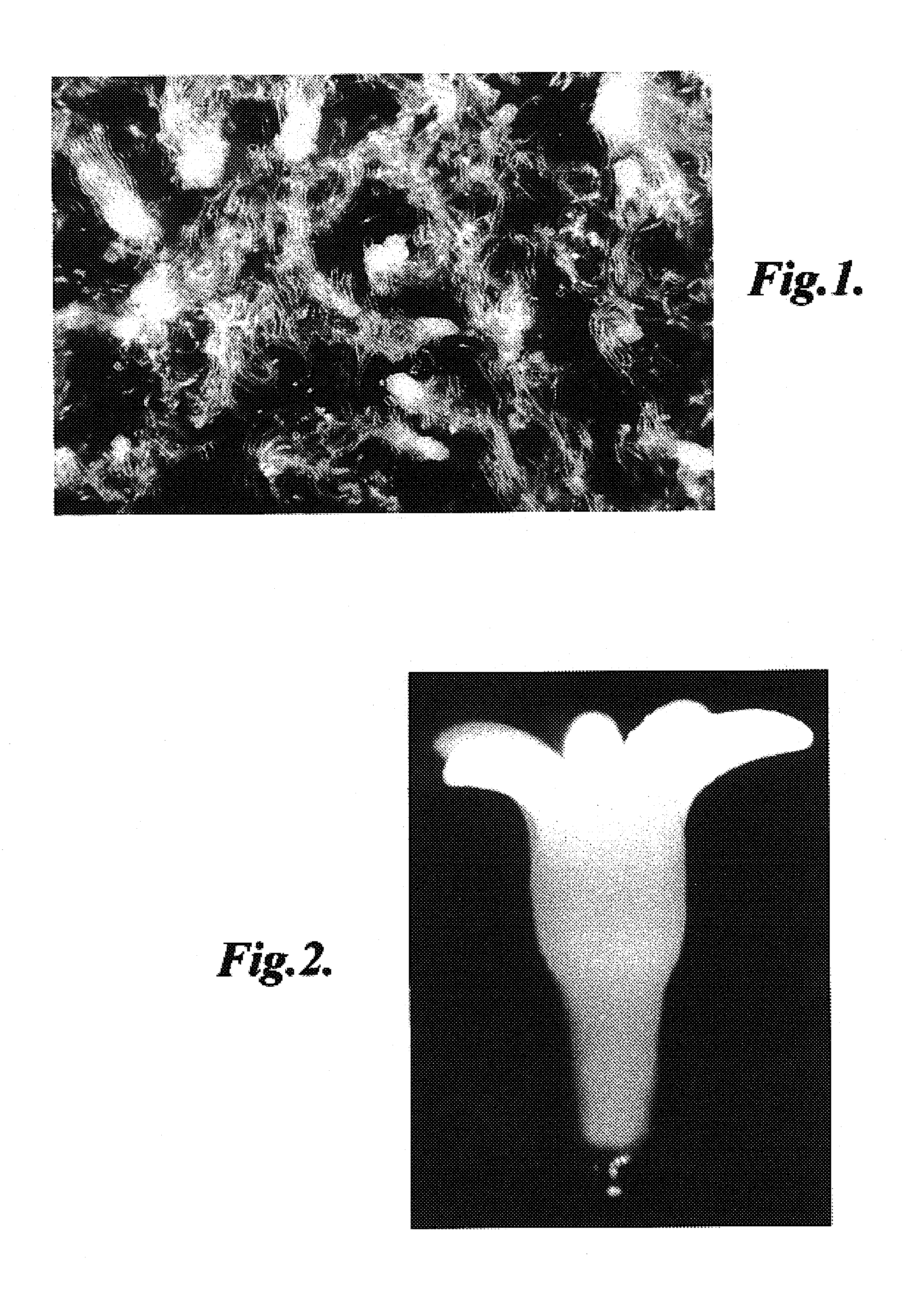Methods for developing conifer somatic embryos
- Summary
- Abstract
- Description
- Claims
- Application Information
AI Technical Summary
Benefits of technology
Problems solved by technology
Method used
Image
Examples
example 1
[0035]This Example describes the results of an experiment that shows that increasing the ratio of the volume of solid development medium to the mass of Loblolly pine ESMs increases the number of good quality, cotyledonary, somatic embryos that develop from the ESMs.
[0036]Loblolly pine ESMs were plated onto solid development medium. The composition of the development medium was the same as medium LM4 (described in Example 2) except that the concentration of maltose was 20 g / L, there was no glucose present in the medium, the concentration of polyethylene glycol was 130 g / L, and the concentrations of FeSO4 and Na2EDTA were half the respective concentrations in medium LM4.
[0037]ESMs from four Loblolly pine genotypes were used—Genotype LP-A, Genotype LP-B, Genotype LP-C., and Genotype LP-D. Approximately 0.5 mL ESMs from each of the four Loblolly pine genotypes were plated onto either 10 ml or 42 ml of solid development medium in Petri dishes. There were 10 plates×2 treatments×4 genotype...
example 2
[0042]This example describes a representative method of the present invention for producing Loblolly pine cotyledonary somatic embryos.
[0043]The composition of the basal tissue culture medium is set forth in Table 2. The modifications to the basal medium composition that are required for each culture medium are listed in Table 3. Each tissue culture medium is prepared by mixing together all the ingredients, with the exception of abscisic acid and maltose (if needed), and bringing the medium to the desired volume prior to autoclaving (15 minutes at 121° C., 15 psi). The abscisic acid is filter-sterilized and aseptically added to the sterile medium. L-glutamine is also filter-sterilized prior to addition to maintenance medium. In media requiring maltose, the medium is made up to 90% of the required volume. A 10× stock solution of maltose is autoclaved, or filter-sterilized, and added to the autoclaved medium. Gelrite is added to make solid LM-1 and LM-2 medium. Ten ml of LM-1 or LM-2 ...
example 3
[0059]This Example describes a representative method of the present invention for producing Douglas fir (Pseudotsuga menziesii) cotyledonary somatic embryos.
[0060]The composition of basal medium is listed in Table 4. Modifications of the basal medium required for each culture medium are listed in Table 5. The composition of stratification medium is set forth in Table 6. The concentration units in Tables 4, 5, and 6 are milligrams per liter (mg / L). The media are prepared by mixing together all of the ingredients, with the exception of abscisic acid (ABA), gibberellic acid (GA) and maltose (if needed), and bringing the media to the desired volume prior to autoclaving for 15 minutes at 121° C., 15 psi. ABA and GA 4 / 7 are filter-sterilized and aseptically added to sterile media. If the medium requires maltose, the medium is first brought to 90% of the desired volume, and an aliquot of a sterile, 10×, stock solution of maltose is added to the autoclaved media. Gelrite is used to make sol...
PUM
| Property | Measurement | Unit |
|---|---|---|
| concentration | aaaaa | aaaaa |
| concentration | aaaaa | aaaaa |
| concentration | aaaaa | aaaaa |
Abstract
Description
Claims
Application Information
 Login to View More
Login to View More - R&D
- Intellectual Property
- Life Sciences
- Materials
- Tech Scout
- Unparalleled Data Quality
- Higher Quality Content
- 60% Fewer Hallucinations
Browse by: Latest US Patents, China's latest patents, Technical Efficacy Thesaurus, Application Domain, Technology Topic, Popular Technical Reports.
© 2025 PatSnap. All rights reserved.Legal|Privacy policy|Modern Slavery Act Transparency Statement|Sitemap|About US| Contact US: help@patsnap.com

